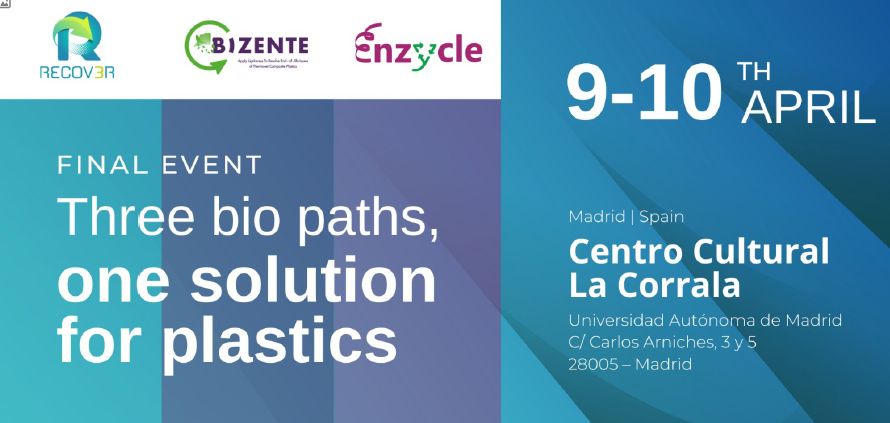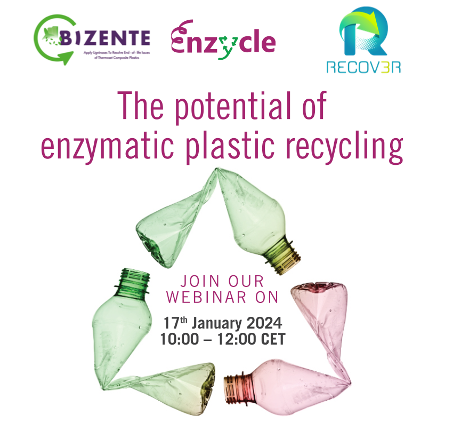Two year of RECOVER – 2nd Editorial
Almost after 2 years from the beginnig of Recover, one of the most complex phases begins to be tackled: testing with the selected organisms in conditions similar to reality, in soil contaminated with plastics, insect rearing chambers or in a composting process in which what happens to the plastics will be determined. In addition, economic, social and logistical studies will be carried out considering transportation of non-recyclable plastics to the treatment units and how the controlled procedures will be applied.
During the first 24 months of the project, the activity focused on defining the types of agrifood waste plastics and the logistical approach, the selection of organisms and enzymes for their degradation and the implementation of the scale-up for their combined production. But in addition to the selection of organisms and enzymes, the basic conditions necessary to degrade the chosen plastics have been established.
Plastic
In relation to the selected plastics we target polyethylene, polystyrene, and polyethylene terephthalate (PET) which are commonly used for food packaging and several uses in the agricultural sector. However, we do not focus on just one-by-one plastic; our final aim is to treat mixed plastic waste streams, which include not only a mixture of plastics but also food or soil residues as they can be found e.g. in sorted municipal solid wastes or mulching films.
Organisms
We have already selected organisms and even synthesised promising enzymes. We have tested several combinations and some resulted in high reduction of the weight of some plastics such as polyethylene which are extremely hard to degrade by biological means. Currently, we are up-scaling their combined production to further test them under close-to-real scenarios using real-life plastic waste streams coming from e.g. municipal solid waste or plastics used in agriculture such as mulching films.
In relation to the selection of organisms, for the microorganisms, we have found many different species of bacteria and fungi capable of degrading the plastics, including some Bacillus and Pseudomonas.
In the case of the insects, we are working mainly with mealworm (Tenebrio molitor) and the greater wax moth (Galleria mellonella).
Regarding the earthworms, we are using two species, one is Eisenia fetida (involved in the production of vermicompost) and another one is Lumbricus terrestris which inhabits the soil.
They will now be combined in different ways depending on the scenario used. We will work at different scales. Most tests performed so far has been done at lab scale in flasks, microcosmos, or mesocosms (25 mL, 5g, 80g, etc), we are now involved on the up-scaling of the production of our “special” microorganisms, insects, and earthworms that will be used in a further stage in close-to-real scenarios, e.g. in soil, plastic contaminated waste of real-life waste streams in composting/vermicomposting reactors (of at least 10kg) or insect rearing chambers
The most novel aspect of the Recover project is the combined action of all these elements: insects, earthworms, the micro-organisms in their digestive systems and the enzymes they produce, which act in collaboration and transform a large part of these plastics into components from which chitin is extracted, an element that allows degradable plastics to be manufactured.
The RECOVER project will have a very positive environmental impact; it is expected to offer huge advantages by decreasing the generation and dispersion of plastics and will reduce the large amount of plastic that is currently buried in landfills or incinerated with the implications this has for the release of GHGs.









There are no comments